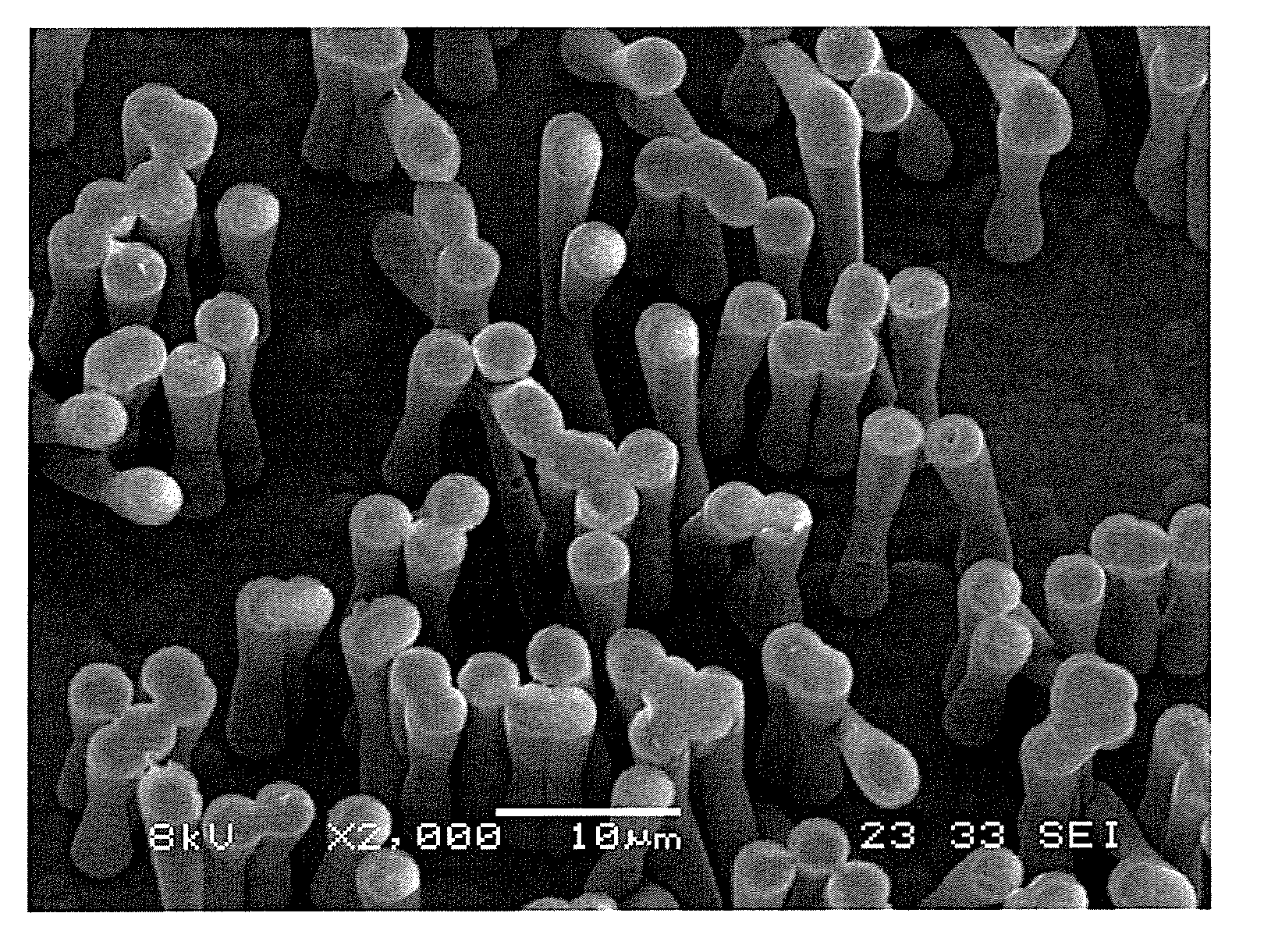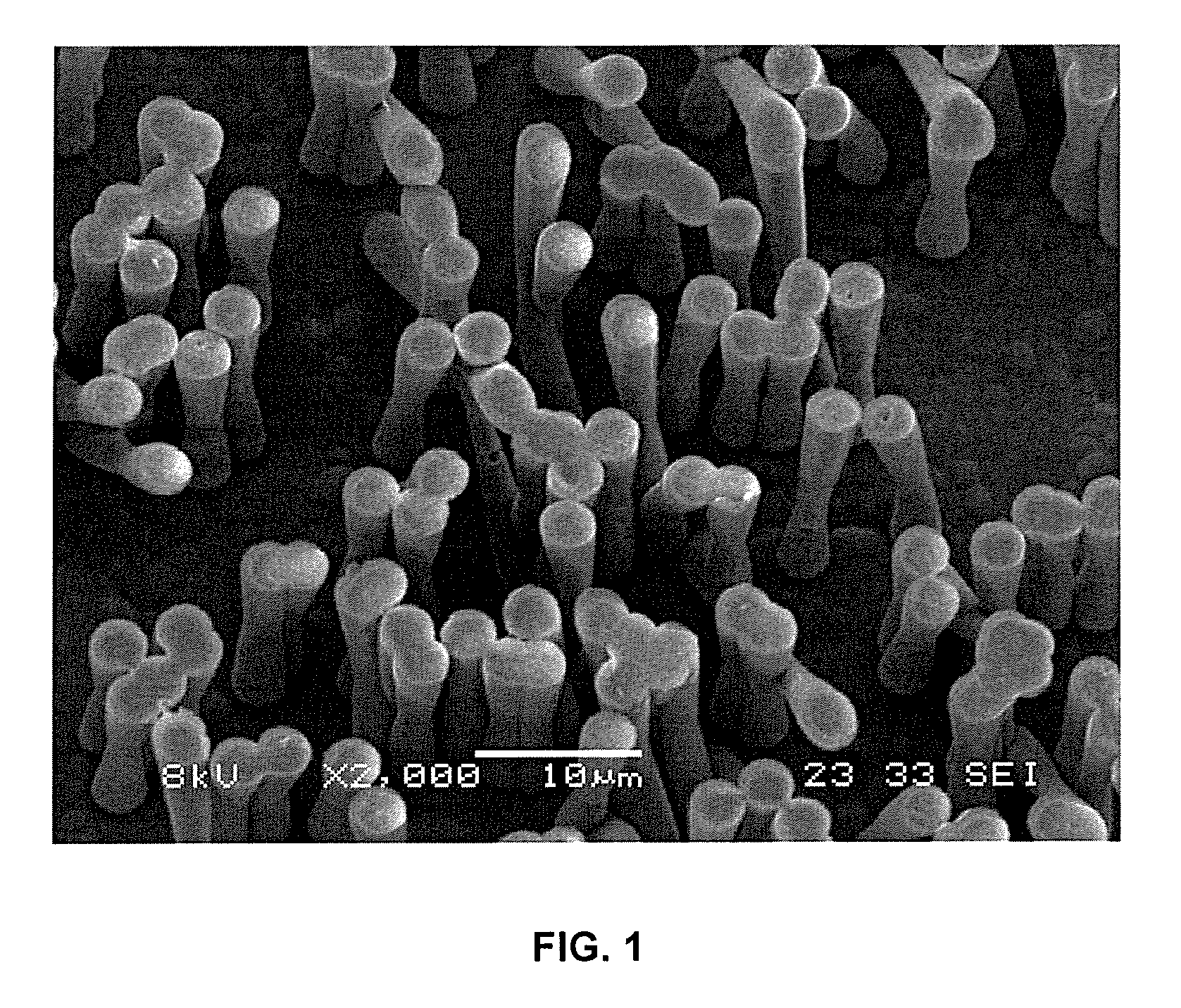Super-hydrophilic structures
a technology of hydrophilic structures and super-hydrophilic materials, applied in the field of polymer-based structures, can solve problems such as sepsis and death
- Summary
- Abstract
- Description
- Claims
- Application Information
AI Technical Summary
Benefits of technology
Problems solved by technology
Method used
Image
Examples
example 1
[0039]A 100 micrometers thick polydioxanone film with pillar-like structures on both sides was prepared. A polydioxanone film was compressed under heat and pressure between two 20 micrometers thick sheets of polycarbonate filter material. The filter material possesses microscopic (0.8 micrometer) holes. The polydioxanone film melted and flowed into the holes. After processing the sheet was annealed. The polycarbonate membrane filter was then dissolved in a bath of dichloromethane. The membrane filters used (0.8 micrometer ATTP, Cat No. ATTP14250, Lot No. R9SN70958 available from Millipore Corporation of Billerica, Mass., USA) possessed two distinct sides. One side had a shiny appearance while the other was duller. A laminate for compression molding was constructed as follows:[0040]a. A segment of polyimide film (sold under the tradename KAPTON by DuPont, Wilmington, Del.) of 65-70 micrometers thickness was placed on a table;[0041]b. A 15.2 cm (6 inch) polished square metal plate (th...
example 2
[0059]PDO pillars of 0.6, 1, and 3 micrometer diameters and heights of 20 micrometers were fabricated on PDO film essentially by the method set forth in Example 1, using commercial track etched polycarbonate membranes as a mold and a nanoimprinting process. Membranes having pores of 0.6 and 1 micrometer diameters and circular diameters of 4.5 cm, with thicknesses of 20 micrometers were obtained from Whatman, Florham Park, N.J. Membranes having pores of 3 micrometers diameter and circular diameters of 4.5 cm, with thicknesses of 20 micrometers were obtained from Millipore Corporation of Billerica, Mass., USA. The membranes were used as templates to imprint a solvent-resistant PDO polymer film of 0.3 millimeter thickness, obtained from Ethicon, Inc. of Somerville, N.J., USA. The PDO film was pressed into the polycarbonate membrane templates under high temperature and pressures (120° C., 6000 kPa (60 bar)) for 5 minutes, melting the PDO. The PDO films with the imprinted PC membrane wer...
PUM
| Property | Measurement | Unit |
|---|---|---|
| heights | aaaaa | aaaaa |
| heights | aaaaa | aaaaa |
| static water contact angle | aaaaa | aaaaa |
Abstract
Description
Claims
Application Information
 Login to View More
Login to View More - R&D
- Intellectual Property
- Life Sciences
- Materials
- Tech Scout
- Unparalleled Data Quality
- Higher Quality Content
- 60% Fewer Hallucinations
Browse by: Latest US Patents, China's latest patents, Technical Efficacy Thesaurus, Application Domain, Technology Topic, Popular Technical Reports.
© 2025 PatSnap. All rights reserved.Legal|Privacy policy|Modern Slavery Act Transparency Statement|Sitemap|About US| Contact US: help@patsnap.com



